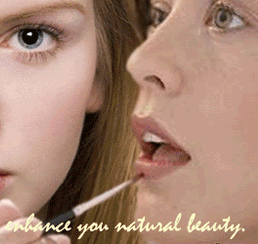


   |
|
Seborrheic Dermatitis - Seborrheic Dermatitis cure, symptoms and treatmentSeborrheic dermatitis is a chronic inflammatory skin disorder generally confined to areas where sebaceous glands are prominent. Seborrheic dermatitis is a common skin condition affecting millions of Americans. It shows up as flaking skin, or reddish patches. Unlike people with dry skin, the skin in people with seborrheic dermatitis is usually oily. It can be unsightly, itchy and, since it is often on the face, may cause embarrassment. It is not contagious. Scales form on reddened skin. This chronic inflammatory skin disorder is generally confined to areas of the head and trunk where sebaceous glands are most prominent. When seborrheic dermatitis occurs in the neonatal period, it usually disappears by six to 12 months of age, suggesting that it may be a response to maternal hormone stimulation. Seborrheic dermatitis frequently affects persons in postpuberty. Seborrheic dermatitis is a skin condition characterized by loose, greasy or dry, white to yellowish scales, with or without associated reddened skin. Cradle cap is the term used when seborrheic dermatitis affects the scalp of infants. What are the symptoms of Seborrheic dermatitis?In infants, seborrhea appears as a scaly redness that usually is not itchy or uncomfortable. In some babies, it affects only the scalp (cradle cap), but in others, it also involves the neck creases, armpits or groin. In adults and adolescents, seborrhea may affect only the scalp, appearing as either patchy or diffuse areas of redness and flaking. Other skin areas commonly affected include the eyebrows, eyelids, forehead, nose creases, outer ear, chest, underarms, groin, skin creases under the breasts, or skin between the buttocks. Although some adults and adolescents feel an itchy or burning irritation in areas of seborrhea, others have no discomfort. In some people, seborrhea flare-ups are triggered by stress. What are the Causes, incidence, and risk factors of Seborrheic dermatitis?Seborrheic dermatitis may involve the skin of the scalp, eyebrows, eyelids, nasolabial creases, lips, behind the ears, in the external ear, and the skin of the trunk, particularly over the sternum and along skin folds. The cause is unknown. Seborrheic dermatitis appears to run in families. Stress, fatigue, weather extremes, oily skin, infrequent shampoos or skin cleaning, use of lotions that contain alcohol, skin disorders (such as acne), or obesity may increase the risk. Neurologic conditions, including Parkinson's disease, head injury, and stroke can also be associated with seborrheic dermatitis. Human immunodeficiency virus (HIV) is also associated with increased cases of seborrheic dermatitis. Cradle cap appears as thick, crusty, yellow or brown scales over the child's scalp. Similar scales may also be found on the eyelids, ear, around the nose, and in the groin. Cradle cap may be seen in newborns and small children up to the age of 3 years, and is a harmless, temporary condition. Cradle cap is not contagious, nor is it caused by poor hygiene. It is not an allergy, and it is not dangerous. Cradle cap may or may not itch. If it itches, excessive scratching of the area may cause additional inflammation, and breaks in skin may cause mild infections or bleeding. What are the treatments for Seborrheic dermatitis?Hygiene issues play a key role in controlling seborrheic dermatitis. Frequent cleansing with soap removes oils from affected areas and improves seborrhea. Patients should be counseled that good hygiene must be a lifelong commitment. Outdoor recreation, especially during summer, will also improve seborrhea, although caution should be taken to avoid sun damage.
|
|
|
|
Cosmetics Home || Beauty Articles || Gynaecological Problems || Contact Us || Body Tattoos || Stretch Marks|| Celebrities || Plastic Surgery || HGH || Resveratrol Reviews ||
(c)Copyright Bestincosmetics.com All rights reserved.
Top - Seborrheic Dermatitis - Seborrheic Dermatitis cure, symptoms and treatment - Top